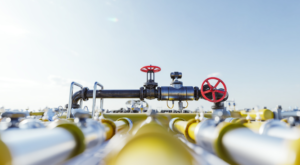
Pipeline Hot Tapping is an essential technique in modern industrial maintenance, especially in sectors like oil and gas, water utilities, and other pipeline-based operations. This method allows for repairs, modifications, and connections to pipelines without interrupting their ongoing operations, reducing the costly downtime traditionally associated with pipeline shutdowns. By leveraging advanced hot tapping techniques, businesses can significantly reduce economic losses caused by operational delays and equipment failures. In this blog, we will explore how pipeline hot tapping can provide a cost-effective solution and improve overall efficiency in industries reliant on continuous pipeline operations.
What is Pipeline Hot Tapping
Pipeline Hot Tapping is a method used to create a branch connection or repair pipelines while they remain operational. This process involves drilling into a live pipeline and inserting a tapping valve without halting the flow of the contents inside. Unlike conventional methods, which require complete shutdowns, pipeline hot tapping ensures that the pipeline continues to function, allowing for maintenance or new connections without disrupting the operation. This technique is widely used in various industries, such as oil, gas, and water supply, offering the benefit of reducing downtime and preventing costly losses in production.
Economic Losses in Traditional Pipeline Maintenance
Traditional pipeline maintenance often requires complete shutdowns, which can lead to substantial economic losses. When a pipeline is shut down for repairs or upgrades, the operations tied to that pipeline must also cease, leading to downtime costs. In the oil and gas industry, for example, production can be halted for days or even weeks, resulting in significant financial losses. Moreover, the cost of bringing the system back online, along with additional repair and safety measures, can escalate rapidly. Pipeline Hot Tapping, on the other hand, allows for maintenance without the need for a complete shutdown, enabling businesses to continue their operations and minimise such economic losses.
How Advanced Hot Tapping Techniques Reduce Economic Losses
Advanced Pipeline Hot Tapping techniques are designed to maximise efficiency while reducing the financial impact of maintenance. These innovative methods enable real-time operations, where the pipeline remains in service during repairs, and no interruptions occur. Additionally, the precision of modern tapping tools ensures that the process is carried out with minimal disruption to the flow inside the pipeline. The use of faster, automated equipment also shortens the overall time required for maintenance, reducing labour costs and allowing companies to quickly return to full production capacity. Furthermore, these advancements in technology improve safety, lowering the risk of costly accidents and associated liabilities during the maintenance process.
Innovations in Hot Tapping Technology
As the demand for more efficient and cost-effective maintenance solutions grows, innovations in Pipeline Hot Tapping technology continue to evolve. One of the significant advancements is the use of smart sensors and AI-powered systems, which help monitor the process in real-time and predict potential issues before they arise. These systems increase the accuracy of hot tapping operations, ensuring that tapping points are correctly placed, reducing errors that could lead to expensive repairs. Additionally, robotic and remote-controlled devices are now being employed to carry out hot tapping procedures in hazardous or hard-to-reach areas, improving safety and precision while cutting down on operational delays and maintenance costs.
Environmental and Regulatory Advantages
Pipeline Hot Tapping not only helps reduce economic losses but also provides significant environmental and regulatory benefits. Traditional methods of pipeline maintenance often result in leaks, spills, and emissions, which can be costly both financially and environmentally. However, by using hot tapping, businesses can prevent leaks during the maintenance process, as the pipeline remains pressurized, and the contents inside are kept secure. This method also supports compliance with stringent environmental regulations by reducing the risk of hazardous waste and emissions. In an era where sustainability is key, Pipeline Hot Tapping offers a more environmentally friendly approach to pipeline maintenance, protecting both company bottom lines and the surrounding ecosystem.
Choosing the Right Hot Tapping Partner
To fully benefit from the cost-saving potential of Pipeline Hot Tapping, it is crucial for companies to choose the right hot tapping service provider. Key factors to consider include the provider’s experience with hot tapping techniques, their ability to deploy advanced technology, and their track record of maintaining high safety standards. It is also important to ensure that the service provider understands industry-specific requirements and regulations. Working with experts who can provide customised solutions and utilise cutting-edge equipment will ensure a smoother, more efficient hot tapping operation, further minimising downtime and reducing economic losses.
Takeaway
Pipeline Hot Tapping is a revolutionary technique that offers industries the ability to perform necessary maintenance without halting operations, reducing economic losses caused by downtime and operational disruptions. With the introduction of advanced hot tapping technologies, businesses can not only save costs but also enhance safety, minimise environmental impact, and comply with regulatory requirements. As more industries adopt these advanced methods, the benefits of pipeline hot tapping will continue to shape the future of pipeline maintenance, offering a more efficient and cost-effective solution for companies worldwide. If your business relies on pipeline systems, exploring advanced hot tapping solutions is a smart investment that will help you stay ahead of the competition and protect your bottom line.


